#paul weigel
Text


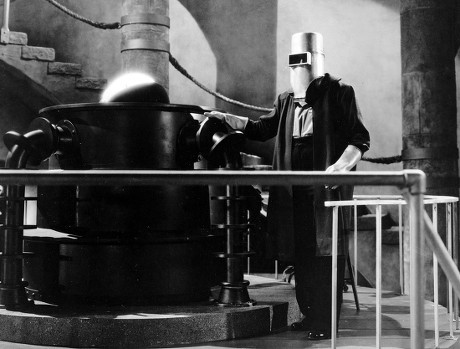


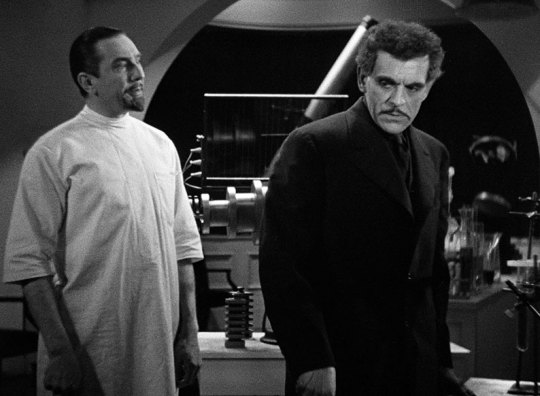
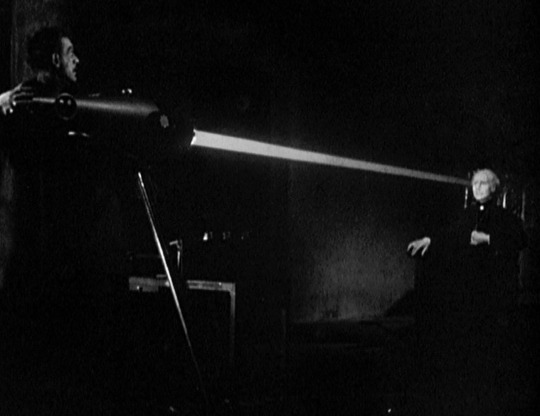



The Invisible Ray (1936)
"It was on such a night that Janos first caught his ray from Andromeda. Your father worked the guides. I held the detecting lens and... never saw again."
"Dear Mother Rukh."
"My son will not learn until too late, I fear, that the universe is very large, and there are some secrets we are not meant to probe."
#the invisible ray#1936#horror film#universal monster cycle#(at least tangentially)#lambert hillyer#john colton#howard higgin#douglas hodges#boris karloff#bela lugosi#frances drake#frank lawton#violet kemble cooper#walter kingsford#beulah bondi#frank reicher#paul weigel#georges renavent#franz waxman#enormously fun mad doctor mayhem which is let down by a pervasive element of racist caricature in the middle section‚ as the action moves#to Africa and brings with it all the suffocating colonial baggage that you might expect from a 1936 film (but which is absolutely no less#disappointing for it). the beginning and end are brilliant tho; amazing laboratory sets‚ cool and inventive sci fi visuals‚ dark and stormy#nights. and of course we have our two horror titans to enjoy: Karloff wide eyed and tragic‚ Lugosi bearded and seductive...#there is more emotional heft and greater poignancy here than many of these films achieve‚ and some little individual moments of beauty#(Karloff's mother's reaction‚ after having her sight restored‚ to seeing her own hands for the first time in many years is quite special)#even Walter Kingsford's comic turn is entertaining and this would stand as one of the best universal uses of Lugosi and Karloff's talents#if only it weren't for that dispiriting and patronising depiction of the African locals in that middle section.. an unfortunate shadow cast#over a nearly brilliant example of Universal's 30s horror hodgepodges
10 notes
·
View notes
Text
George Weigel: The West needs its own version of JPII’s ‘Revolution of Conscience’ - CatholicVote org
#catholic#catholicism#christianity#spiritual warfare#jesus christ#blessed virgin mary#our lady#exorcist#demon#the west#pope john paul ii#roman catholic church#roman catholic#revolution of conscience#catholic vote#voting#morality#ethics#conscience#truth#justice#social justice#george weigel#protestant#evangelicals#nondenominational#sacramental protestants#orthodox christianity#congress#president
5 notes
·
View notes
Text
6 maggio … ricordiamo …
6 maggio … ricordiamo …
#semprevivineiricordi #nomidaricordare #personaggiimportanti #perfettamentechic
2022: Eugenio Allegri, attore e regista italiano.(n. 1956)
2021: Paul Van Doren, è stato un imprenditore statunitense, fondatore della Vans, azienda di scarpe negli Stati Uniti. Van Doren ha avuto cinque figli: Paul Jr., Steve, Cheryl, Taffy e Janie. Il suo libro di memorie, Authentic , è stato pubblicato nove giorni prima della sua morte. (n. 1930)
2020: Martin Spellman, attore statunitense,…

View On WordPress
#6 maggio#Ann Todd#Arnaldo Ninchi#Charles Farrell#Eugenio Allegri#George Lindsey#Guido Brignone#Guy Williams#Helene Weigel#Luigi Almirante#Maria Laura Rocca#Marlene Dietrich#Martin Spellman#Morti 6 maggio#Oswald Birley#Paolo Ferrari#Paul Van Doren#Personaggi morti 6 maggio#Ricordiamo#Sir Oswald Hornby Joseph Birley#Virginia Belmont#Vittorio Zarfati
0 notes
Text
ワルシャワでの国際ヴァルター・ベンヤミン協会の研究集会に参加して
今年は、ワルシャワのゲットーでユダヤ人が蜂起してから80年の節目にあたる。1943年4月19日、この強制隔離居住地区に残っていたユダヤ人は、ナチの言う「最終的解決」へ向けて一掃されるのに抗して武装抵抗を開始した。一か月近くに及んだ戦闘の後、ゲットーは解体され、ユダヤ人の街は灰燼に帰することになる。捕らえられた人々は、収容所などで虐殺された。この80年前の出来事を記念し、その犠牲者を追悼する催しは、ワルシャワで、そして各地で続いているが、それをつうじて想起されるべきは、出来事がその核心においてけっして過ぎ去っていないことである。特定の人々の存在を否定しようとする言動は今も止まない。それに対する抵抗は続けられなければならない。
9月27日から30日にかけてワルシャワの二つの学術機関(ポーランド科学アカデミーとSWPS大学)を会場に、国際ヴァルター・ベンヤミン協会の研究集会を開催することもま…

View On WordPress
#Eri Friedlander#Friedrich Hölderlin#Gayatri C. Spivak#Historical Museum of Warsaw#International Walter Benjamin Society#IWBC Conference Warsaw 2023#Justice of Politics#Nobuyuki Kakigi#Paul Celan#POLIN: Museum of the History of Polish Jews#Polish Academy of Science#Sigrid Weigel#Susan Buck-Morss#Svetlana Alexievich#SWPS University#This is not my story#Walter Benjamin#Warsaw Ghetto#Warsaw Ghetto Uprising
0 notes
Note
If I’m interested in learning more about Pope John Paul II, do you have any good book recs? Love both of your blogs by the way!!
Thank you! I’m sorry that I didn’t see this question earlier; I always tend to overlook the papal blog because I’m so terrible at updating it.
There are tons of books about Pope John Paul II, so I’ll try to narrow the suggestions down to a handful:
•George Weigel’s two-volume biography of John Paul II is almost certainly the best-known and definitive studies of John Paul II’s life from Poland to the Vatican. The first volume, Witness to Hope: The Biography of Pope John Paul II (BOOK | KINDLE), was originally published in 1999 and tracks the Polish Pope from birth until the turn of the millennium.
The second volume of Weigel’s biography, The End and the Beginning: Pope John Paul II -- The Victory of Freedom, the Last Years, the Legacy (BOOK | KINDLE), was published in 2010 and devotes almost the entire first half of the book to an in-depth look at John Paul II’s lifelong crusade against Communism. The other half of the book focuses on the Pope’s final years as his health began to fail and as he seemingly used his very public physical deterioration as a lesson in suffering, humility, and strength until his death in April 2005.
In 2017, Weigel published another book -- Lessons In Hope: My Unexpected Life with St. John Paul II (BOOK | KINDLE) -- which isn’t a traditional biography, but a much more personal book about Weigel’s journey as the Pope’s biographer and his relationship with John Paul II over the years. It’s unique compared to his formal biographies because it shows John Paul II from a different, more human perspective than that of the infallible “Keeper of the Keys to Heaven”.
Some of the other books that I’ll suggest are very good, but they can also feel incomplete because John Paul II’s papacy lasted so long that the authors were only able to capture certain parts of his reign.
•His Holiness: John Paul II and the Hidden History of Our Time (BOOK | Kindle not available) by Carl Bernstein and Marco Politi is one of those books that is solid but not a complete history of the Pope’s reign because it was published in 1996, nearly 10 years before John Paul II’s death. And, yes, the co-author is the Carl Bernstein of Washington Post/Watergate/All the President’s Men/Woodward & Bernstein fame.
•John Paul the Great: Remembering a Spiritual Father (BOOK | Kindle not available) by former Ronald Reagan speechwriter Peggy Noonan was published shortly after John Paul II’s death in 2005 and is excellent. Noonan’s book is also very personal to the author and paints a portrait of John Paul II that helps us understand what he meant to so many people. Noonan also helps explain the source of the Pope’s unique charisma and how he used his immense natural political gifts to reach his audiences.
•The Pontiff In Winter: Triumph and Conflict in the Reign of John Paul II (BOOK | KINDLE) by John Cornwell is not the most flattering book about Pope John Paul II, but it is an important book to get a balanced understanding of his life and of the health of the Catholic Church towards the end of John Paul II’s papacy. Cornwell has long been one of the best connected Vatican journalists and this book is important because it questions how much blame should have or could have been placed on John Paul II for the scandals and corruption that simmered below the surface inside the Vatican throughout his reign.
•John Paul II: My Beloved Predecessor (BOOK | Kindle not available) is a short collection of writings and homilies by Pope Benedict XVI that he wrote about John Paul II over the years -- as Cardinal Joseph Ratzinger while John Paul II was alive, and as Benedict XVI after succeeding John Paul II in 2005. There’s nothing earth-shattering in the book, but it’s an interesting look at one Pope directly from the pen of another Pope.
•The last recommendation isn’t a book about Pope John Paul II, but a book written by John Paul II: The Place Within: The Poetry of Pope John Paul II (BOOK | Kindle not available). This book of poetry written by John Paul II at various points throughout his long life is an incredibly unique window into the soul of a Pope. Some of the poems -- which are translated into English from John Paul II’s native language of Polish by Jerzy Peterkiewicz -- are quite good! Like I said, it’s not a biography of John Paul II, but in many ways reading his poetry can be just as revealing.
#Books#Book Suggestions#Book Recommendations#Popes#History#Pope John Paul II#John Paul II#Books about Popes#Papal History#Papacy#St. John Paul II#Pope St. John Paul II#George Weigel#Peggy Noonan#John Cornwell#Pope Benedict XVI#Joseph Ratzinger#Carl Bernstein#Marco Politi
1 note
·
View note
Text
Lost, but Not Forgotten: The Dancer of the Nile (1923)


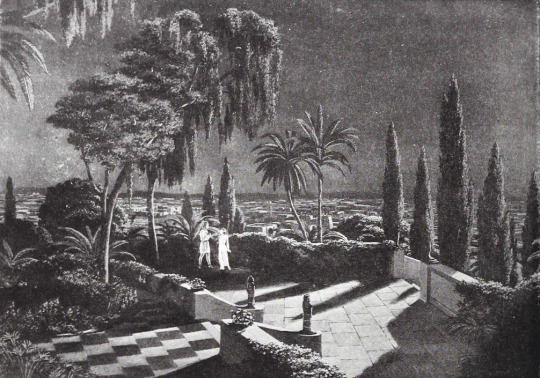
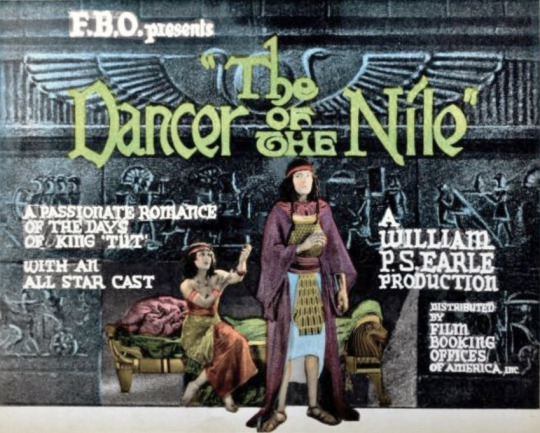


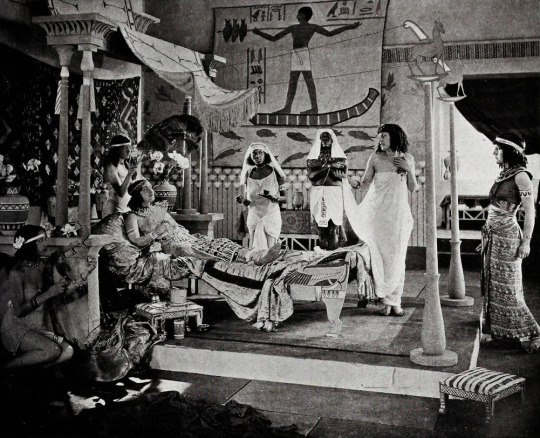
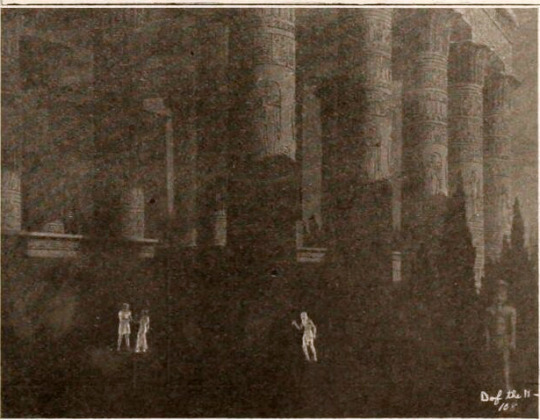

Alternate Titles: Tut-ankh-amen, Tutankhamen of Luxor
Direction: William P.S. Earle
Scenario: William P.S. Earle
Original Story: Blanche Taylor Earle
Production Manager: Dick L’Estrange
Camera: Jules Cronjager & Joe Goodrich (assistant)
Scenic Artist: Xavier Mochado
Set Designer: Paul Dodge
Technical Advisor: Capt. Dudley S. Corlette
Studio: William P.S. Earle Pictures Corporation (Production) & Film Booking Offices of America (F.B.O.) (Distribution)
Performers: Carmel Myers, Bertram Thomas Grassby, Malcolm McGregor, Anthony Merlo, Sam de Grasse, Iris Ashton, June Elvidge, Paul Weigel, Howard Gaye, Mother/Nellie Anderson, Beatrice Marsh, & Earle Marsh
Premiere: 12 October 1923, Loew’s New York, New York, NY
Status: presumed entirely lost
Length: 6 reels, 5,787 feet
Synopsis (synthesized from magazine summaries of the plot):
Princess Ankhnespaton [sic] (June Elvidge), daughter of King Akhnaton [sic] (Howard Gaye), has a run in with a band of thieves while traveling. Prince Karmit (Malcolm McGregor) of Syria arrives, disguised as a merchant, and saves the princess. The princess becomes enamored with Karmit and invites him back to the royal residence in Thebes.
While visiting the royal gardens, Karmit encounters a dancer, Arvia (Carmel Myers). He is instantly smitten. The princess is furious that Karmit has rebuffed her for a mere dancer.
Meanwhile, tension between those loyal to the king and those loyal to the old gods erupt when the seasonal flooding of the Nile river doesn’t occur. The princess finds in this situation an opportunity to get her revenge on Arvia.
The princess decrees that Arvia will be offered as a human sacrifice to the god Sobek, in order that the Nile will rise as expected. Arvia is adorned with a poisoned amulet to knock her out while she is fed to the crocodiles.
In an unexpected turn of events, the high priest Pasheri (Sam De Grasse) discovers that the intended sacrifice is his own daughter. Pasheri sneaks into the chamber where Arvia is to be sacrificed and saves her at the last moment.
With Pasheri’s aid, Karmit whisks Arvia away. As the Nile rises, the new couple sail away to Karmit’s kingdom to live happily ever after.
The princess goes on to marry Prince Tutankhamen (Bertram Grassby). And, after the death of her father Prince Tut will become King Tut.
Additional sequence(s) featured in the film (but I’m not sure where they fit in the continuity):
The Temple of Amun-Re is also depicted in the film.



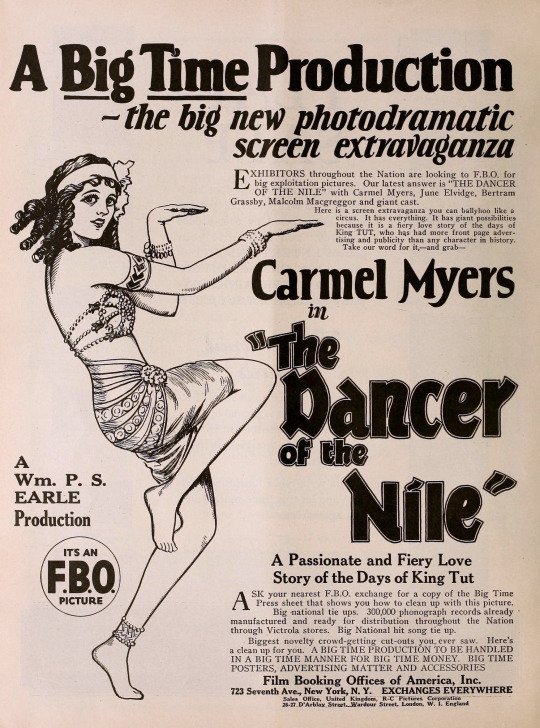


Points of Interest:
While many contemporary reviewers of The Dancer of the Nile (DotN) didn’t mark it as an especially good film, props were given for the artistic effects achieved by Director Earle. Earle and his brother, Ferdinand Pinney Earle, were both pioneers of the era in special effects.
Ferdinand was a painter who contributed matte paintings and art titles to many films of the 1910s and 1920s. While William was primarily a director, both brothers ambitiously created films that were on the cutting edge in regard to techniques of incorporating matte paintings with live actors/studio-shot footage.
For William, it was DotN, and for Ferdinand it was A Lover’s Oath (1920/1925, presumed lost save for a few fragments), which was an adaptation of Omar Khayyam’s Rubaiyat. (ATM, I’m planning on doing the next installment of this series on this film!)
(Explanatory note: One technique at use here involves double exposure. Part of the frame is obscured while filming, leaving the obscured part of the film unexposed. The film is then rewound, with the exposed part of the film obscured, to film another element. The final result is, hopefully, a cohesive sequence.
Another technique is shooting through painted glass, which, if painted and lit correctly, results in the painting and the scene occurring behind it appearing as a singular space.
For example, a fully painted environment with live actors moving across the scene. In DotN, there is at least one scene where a live actress ascends a set of stairs, which is a painting. These techniques require an amazing amount of precision, but when done right they can be really dazzling. The double-exposure matting technique has persisted through most of film history, albeit rarely at the scale the Earle brothers were using it!
Below is an illustration of how a moving version of matte photography works from a 1926 issue of Photoplay, followed by some stills from DotN that used the multiple-exposure technique.





I have a few posts coming up that go into more detail on how special effects were executed in films of the 1920s!)
William P.S. Earle’s focus on the artistic elements without much regard for story or characterization may have left many critics cold, but DotN did prove to be a lasting attraction, running in theatres around the world for years following its release. DotN was produced hot on the heels of the discovery of Tutankhamen’s tomb in 1922 in Luxor, which launched a new wave of Egyptomania. On one hand, Earle was cashing in on a trend, but on the other, he took the opportunity offered by assured profitability to experiment. In addition to the special effects discussed above, Earle attempted to capture as much period accuracy as possible in the painted settings, props, and costumes. Balancing historical accuracy with perceived “authenticity” in period art is exceedingly difficult—Earle seemingly had mixed success. However, one contemporary review in the magazine Art and Archaeology by Dudley S. Corlett (also the film’s technical advisor) is highly complementary of DotN’s attention to historical and artistic detail. [You can find the review in the transcription section!]
After Earle had more or less finished DotN, F.B.O. bought “Tut-ankh-amen” for distribution. F.B.O. financed reshoots that shifted the narrative away from Tut and towards Arvia, the dancer—hence the title change. I guess F.B.O. believed that cashing in on the trend of movies about dancers would be more lucrative than cashing in on Tut-mania!
☕Appreciate my work? Buy me a coffee! ☕
---
Transcribed Sources & Annotations over on the WMM Blog!
#1920s#1923#lost film#Lost but not forgotten#Dancer of the Nile#tutankhamun#classic film#classic movies#film#silent film#american film#silent movies#silent cinema#silent era#egyptomania#film history#history#William P.S. Earle#movies#Blanche Taylor Earle#Carmel Myers
42 notes
·
View notes
Text
«One of the added bonuses of visiting the Abbey [of the Genesee] was that the monks were on retreat and the retreat master was Fr. Simeon from the Trappist abbey in Spencer, Massachusetts. Fr. Simeon’s original name is Erasmo Leiva-Merikakis—a name that will be familiar to anyone who has read his masterful, multi-volume work on the Gospel of Matthew […] We were blessed with the opportunity to speak with Fr. Simeon for a couple of hours on Saturday afternoon in the sunny lounge area in the lobby of the main Abbey. What a joy to speak to a man whose life is a wonderful demonstration of how God often writes straight with crooked lines! Erasmo had joined a Trappist monastery in Georgia in the mid-sixties, but in his youthful naivete could not negotiate that vocational choice in the midst of the craziness of the post-Vatican II tsunami. So he left, got his doctorate at Emory, got married and had children. Along the way he developed professional connections with Hans Urs von Balthasar and a dynamic young Jesuit by the name of Fr. Joseph Fessio who was starting up this strange new venture called “Ignatius Press.” Erasmo became one of the primary early translators of Balthasar’s works into English as anyone who has read Balthasar in English will know. Indeed, at one point he had Balthasar in his home for dinner, at the behest of Fr. Fessio, during one of Balthasar’s rare visits to the United States. One has to understand what a vicarious joy this engenders in me. Think for one second what elation would be in the soul of Garrigou Lagrange had he had the opportunity to dine with Aquinas. Can you imagine the table talk? “So, Thomas, who is correct on the nature and grace issue? Me, or de Lubac?” The “respondeo” and “sed contra” would resonate in Garigou’s mind for a lifetime and beyond.
Eventually, Erasmo’s marriage dissolved after which he was granted an annulment and he joined the Trappists once again and was ordained a priest in 2013. I too have been “married” before and went through the annulment process and am now in a much more profound sacramental and vocational reality with my marriage to my wife Carrie, who also has a Ph.D. in theology and who is both my strongest supporter and my deepest and most trenchant critic. And so, both Erasmo’s life and my own gives vivid testimony to the fact that “second chances” are nothing of the sort, and represent in reality the Christian’s gradual deepening of his or her sense of vocational “mission.” Nothing that came before is wasted. Nothing was a “Mulligan” as they say of errant golf shots among friends. Regrets over poor decisions in our youth are a waste of time and are spiritually destructive. You are who you are because of the path you took, missteps and all, and all of it is why you are where you are right now, in the place you stand, and in the world you now inhabit. In other words, in the spiritual life, we are all nomads like Abraham, awaiting God’s call. George Weigel once told me and my colleague Rodney Howsare over a round of good Scotches after he gave a lecture at DeSales, that Pope John Paul never lived his life looking in the rear view mirror. The Gospel beckons us ever forward and once we put our hand to its plow “looking back” is no longer an option.»
— Larry Chapp: “Some Meditations on my Trip to the Abbey of the Genesee: Quo Vadis?”
#‘‘this is a hard saying’’#big if true#larry chapp#the romance of orthodoxy#shaking screaming crying
2 notes
·
View notes
Text
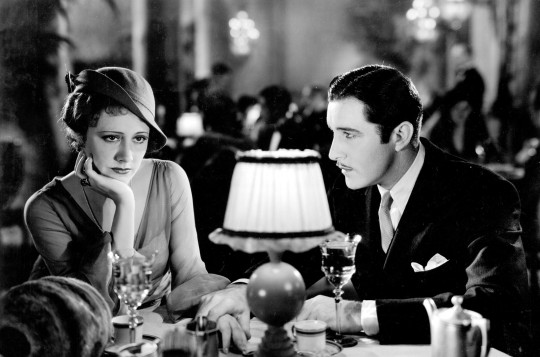
Irene Dunne and John Boles in Back Street (John M. Stahl, 1932)
Cast: Irene Dunne, John Boles, George Meeker, Zasu Pitts, June Clyde, William Bakewell, Arletta Duncan, Doris Lloyd, Paul Weigel, Jane Darwell, Shirley Grey, James Donlan, Walter Catlett, James McWade. Screenplay: Gladys Lehman, Lynn Starling, based on a novel by Fannie Hurst. Cinematography: Karl Freund. Art direction: Charles D. Hall. Film editing: Milton Carruth.
The 1932 version of Back Street (the first of three films Hollywood made from Fannie Hurst's novel) suggests that there are some things you couldn't say even in a pre-Code movie. Ray Schmidt (Irene Dunne) and Walter Saxel (John Boles) have fallen in love, but he's engaged to a woman of whom his mother approves. He thinks that if his mother meets Ray, she might be inclined to let him break off the engagement and marry her instead. But on the day of the scheduled meeting, Ray's sister, Freda (June Clyde), comes to her in distress: The man she's been seeing is leaving town and she desperately needs Ray's help in persuading him to stay. If he doesn't, she tells Ray, she'll kill herself -- and she opens a window to prove the point. Why is Freda so desperate? The answer becomes apparent with an exchange of Meaningful Glances: She's pregnant. The word or any of its variants is never spoken. So Ray misses the meeting with Mother and loses the chance to marry Walter. Years pass and Ray and Walter meet again, after he's married and become a wealthy businessman. He sets her up in an apartment as his mistress, which she tolerates for a time until she realizes what she's lacking in life and begs him, "Walter, give me a child." Walter is shocked at the very idea. The mechanics of an illicit sexual relationship, including the veiled subject of contraception, are summed up in the reticence around Freda's plight and Ray's plea to Walter, which sounds a bit like she wants him to go down to the baby store and pick one off the shelf. Euphemisms aside, your acceptance of the movie depends to some degree on whether you enjoy watching Dunne, an actress who can slip into coyness and archness. The film gives her a gamut to run, from the flirtatious Ray who likes to drink beer with the fellows in the early part of the film, to the nobly suffering kept woman of the later part. Boles is a little stiff in his role, though that rather suits the character. On the whole, Back Street is a solid "woman's picture" of the kind that would be treated with more life and color by filmmakers like Douglas Sirk in the 1950s.
3 notes
·
View notes
Text
Slate Magazine: Dave Weigel: Sarah Palin vs. Beltway Republicans: Conservatism in America 2014
Source:The New Democrat
If Rick Santorum and Sarah Palin are the faces of Conservatism in America in 2014, then we might as well start planning its funeral and Liberals can declare victory in this ongoing ideological war of some 50 years now. The only two Conservatives at CPAC last weekend were Senator Rand Paul and former U.S. Senator/actor/talk show host/commercial spokesperson, whatever the…

View On WordPress
#2014#America#Ann Coulter#Christian Nationalism#Christian Nationalists#Christian Right#Conservatism#Conservatives#CPAC#Dave Weigel#Far Right#Fred Thompson#Nationalism#Nationalists#New Right#Populism#Populists#Republicans#Rick Santorum#Sarah Palin#Tea Party#United States
3 notes
·
View notes
Text
VIVRE EN LITTÉRATURE ET POÉSIE: "POLITIQUE DE L'AMOUR"
VIVRE EN LITTÉRATURE ET POÉSIE: “POLITIQUE DE L’AMOUR”
ARTICLE
Politique de l’amour : Ingeborg Bachmann et Paul Celan
Une correspondance
Article paru dans la Quinzaine littéraire numéro 1049, novembre 2011
Le 17 mai 1948, une jeune femme écrit à ses parents : « Le poète surréaliste Paul Celan, dont j’ai pu faire la connaissance en compagnie de Hans Weigel avant-hier soir, et qui est très fascinant, est merveilleusement tombé amoureux de moi, et…

View On WordPress
2 notes
·
View notes
Photo
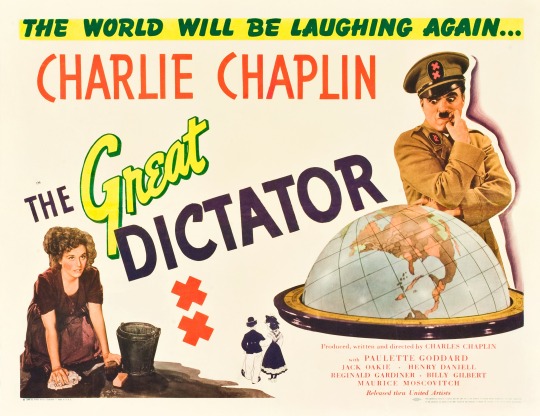
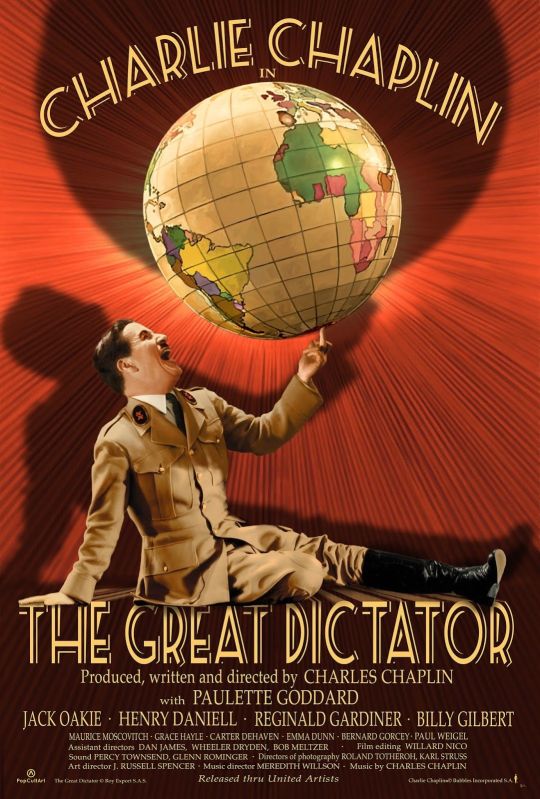

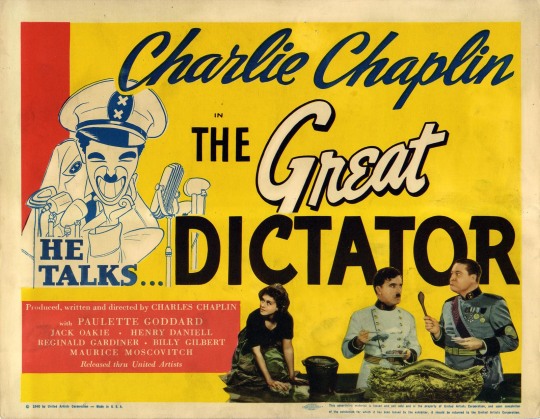
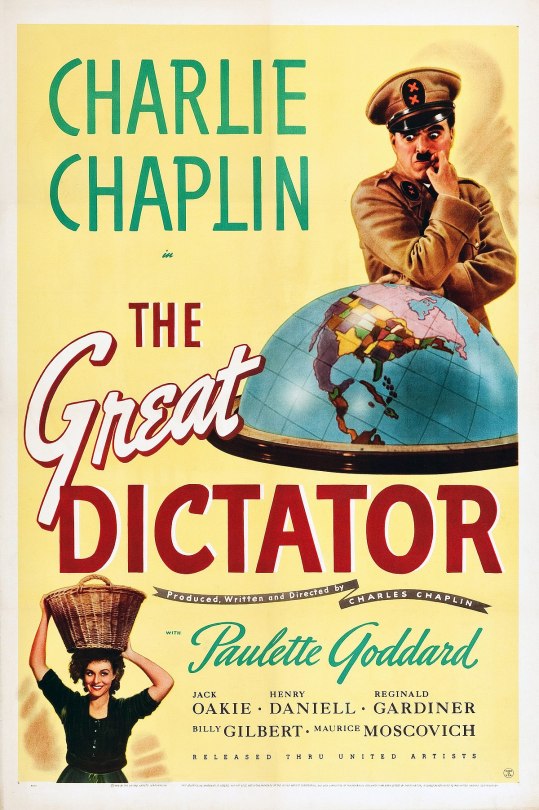
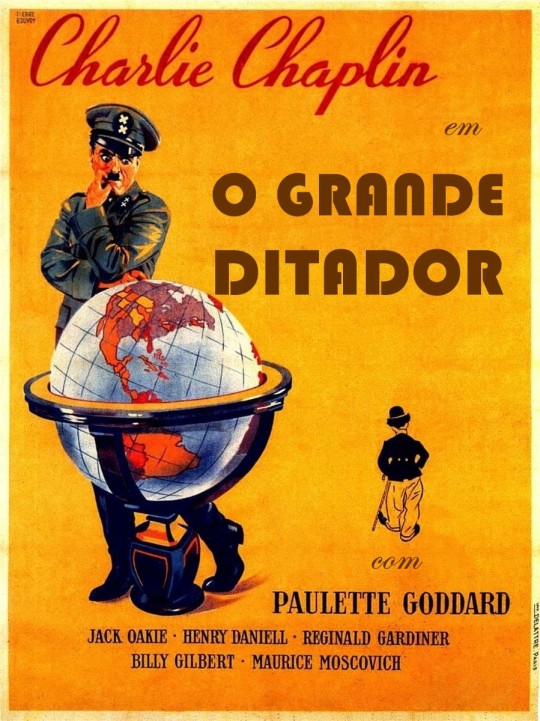

The Great Dictator (1940) Charlie Chaplin
August 2nd 2020
#the great dictator#1940#charlie chaplin#paulette goddard#reginald gardiner#maurice moscovitch#billy gilbert#henry daniell#jack oakie#bernard gorcey#paul weigel#grace hayle#carter dehaven#emma dunn#the dictator
7 notes
·
View notes
Text

Jane Darwell, George Meeker, Paul Weigel, and June Clyde in a publicity still for Back Street (1932). Jane was born in Palmyra, Missouri, and had 211 acting credits, from eight 1913 shorts to Mary Poppins in 1965. She has eleven entries among my best 1,001 movies, with four directed by John Ford, including her Oscar winner, The Grapes of Wrath. This is her fourth honorable mention, after The Scarlet Empress, All Through the Night, and Mary Poppins.
0 notes
Text

10.14.18
(4)
#letterboxd#film#watched#the invisible ray#lambert hillyer#boris karloff#bela lugosi#frances drake#frank lawton#beulah bondi#walter kingsford#violet kemble-cooper#frank reicher#paul weigel#anne gwynne#4
2 notes
·
View notes
Text
26.11.21
Part 6
Easy: We’ll figure something out about Julius! You’re free for the time being, that’s a good start!
Ringo: In liberty
Paco: Hey!
Ringo: Hey, Paco!
Paco: Welcome back!
Ringo: Thanks!
Paco: Great to have you back!
Ringo: Yes, I agree!
Paco: I’ll talk to you later, alright?
Ringo: Sure thing! See you then!
Easy: I really hope he doesn’t come over now kissing ass!
Ringo: Why don’t you go ahead and I will sort this out with him
Huber: Beckmann, glad to see you being on the loose
Ringo: Hm. That’s relative, I’d say!
Huber: I understand. At least better then still being in a prison cell!
Ringo: Absolutely! That is reserved for somebody else anyway! But I’m sure the device comes in your size as well. Enjoy your day!
Easy: Julius! What are you doing here?
Julius: I wanted to surprise you!
Easy: You’ve succeeded! But how?
Julius: I have one hour, Niklas will cover for me!
Easy: You’re crazy!
Julius: Why? It is your wedding anniversary and you can’t spend it alone!
Easy: Come here! Actually I have a surprise for you as well!
Julius: What? But you didn’t even know that I…
Ringo: Julius?
Julius: Ringo!
Translation @happyladybug93
#ringsy#ringo x easy#easy winter#ringo beckmann#paul eilert#paco weigel#benedikt huber#unter uns spoilers
28 notes
·
View notes
Text
(Mostly) Lost, but Not Forgotten: Omar Khayyam (1923) / A Lover’s Oath (1925)

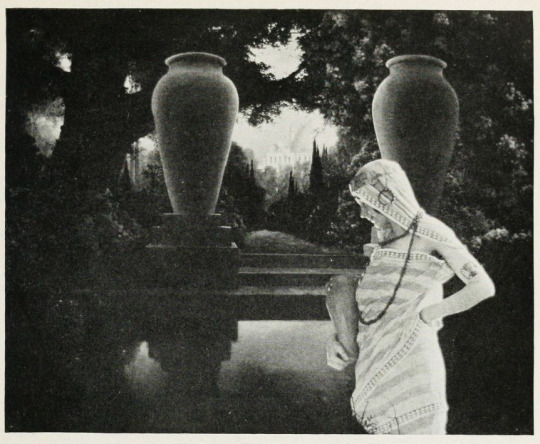
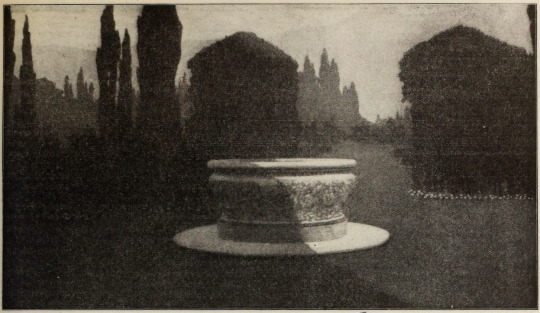
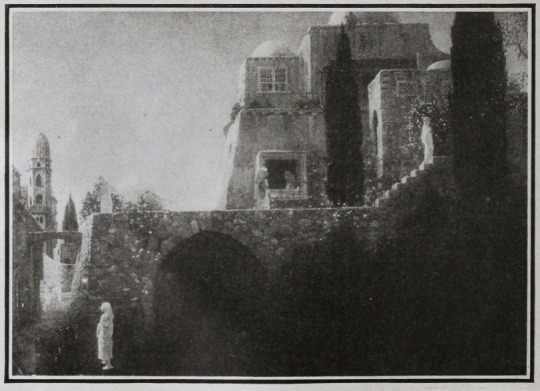
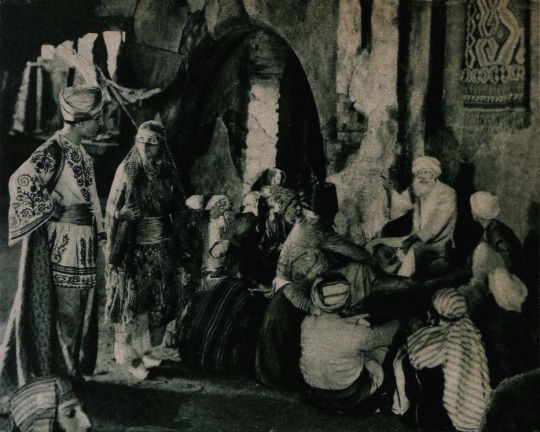
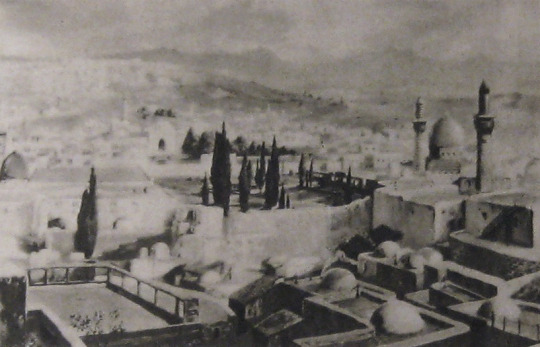

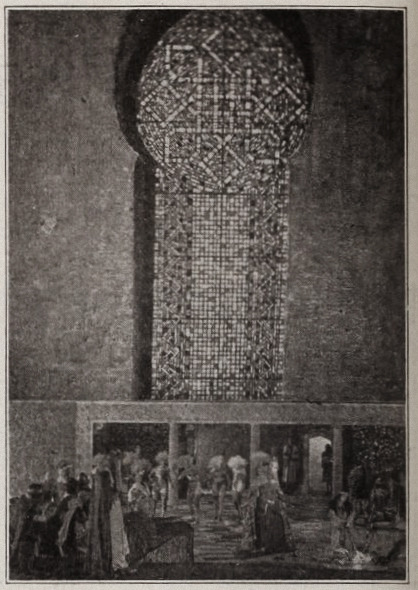
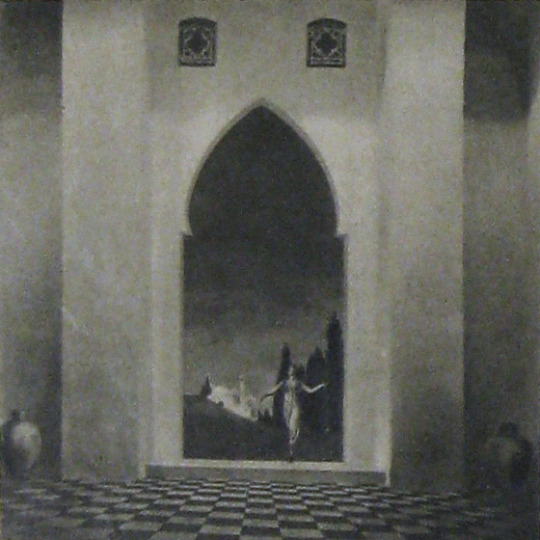


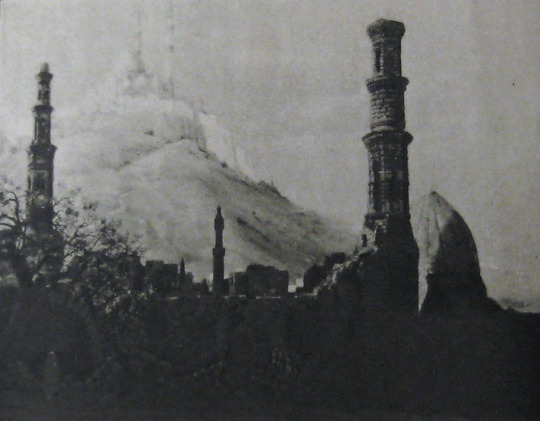
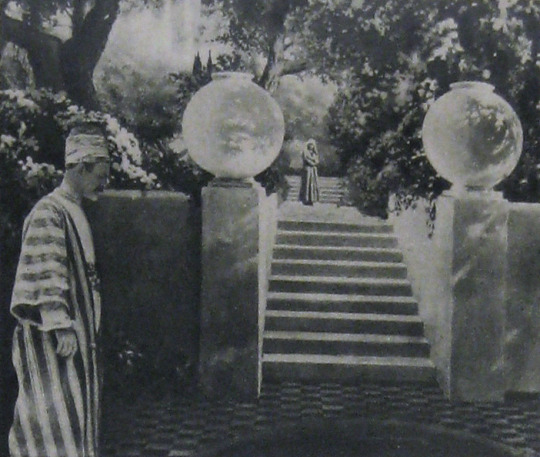
Alternate Titles: The Rubaiyat of Omar Khayyam, The Rubaiyat, Omar Khayyam, Omar
Direction: Ferdinand Pinney Earle; assisted by Walter Mayo
Scenario: Ferdinand P. Earle
Titles: Marion Ainslee, Ferdinand P. Earle (Omar), Louis Weadock (A Lover’s Oath)
Inspired by: The Rubaiyat of Omar Khayyam, as edited & translated by Edward FitzGerald
Production Manager: Winthrop Kelly
Camera: Georges Benoit
Still Photography: Edward S. Curtis
Special Photographic Effects: Ferdinand P. Earle, Gordon Bishop Pollock
Composer: Charles Wakefield Cadman
Editors: Arthur D. Ripley (The Rubaiyat of Omar Khayyam version), Ethel Davey & Ferdinand P. Earle (Omar / Omar Khayyam, the Director’s cut of 1922), Milton Sills (A Lover’s Oath)
Scenic Artists: Frank E. Berier, Xavier Muchado, Anthony Vecchio, Paul Detlefsen, Flora Smith, Jean Little Cyr, Robert Sterner, Ralph Willis
Character Designer: Louis Hels
Choreography: Ramon Novarro (credited as Ramon Samaniegos)
Technical Advisors: Prince Raphael Emmanuel, Reverend Allan Moore, Captain Dudley S. Corlette, & Captain Montlock or Mortlock
Studio: Ferdinand P. Earle Productions / The Rubaiyat, Inc. (Production) & Eastern Film Corporation (Distribution, Omar), Astor Distribution Corporation [States Rights market] (Distribution, A Lover’s Oath)
Performers: Frederick Warde, Edwin Stevens, Hedwiga Reicher, Mariska Aldrich, Paul Weigel, Robert Anderson, Arthur Carewe, Jesse Weldon, Snitz Edwards, Warren Rogers, Ramon Novarro (originally credited as Ramon Samaniegos), Big Jim Marcus, Kathleen Key, Charles A. Post, Phillippe de Lacy, Ferdinand Pinney Earle
Premiere(s): Omar cut: April 1922 The Ambassador Theatre, New York, NY (Preview Screening), 12 October 1923, Loew’s New York, New York, NY (Preview Screening), 2 February 1923, Hoyt’s Theatre, Sydney, Australia (Initial Release)
Status: Presumed lost, save for one 30 second fragment preserved by the Academy Film Archive, and a 2.5 minute fragment preserved by a private collector (Old Films & Stuff)
Length: Omar Khayyam: 8 reels , 76 minutes; A Lover’s Oath: 6 reels, 5,845 feet (though once listed with a runtime of 76 minutes, which doesn’t line up with the stated length of this cut)
Synopsis (synthesized from magazine summaries of the plot):
Omar Khayyam:
Set in 12th century Persia, the story begins with a preface in the youth of Omar Khayyam (Warde). Omar and his friends, Nizam (Weigel) and Hassan (Stevens), make a pact that whichever one of them becomes a success in life first will help out the others. In adulthood, Nizam has become a potentate and has given Omar a position so that he may continue his studies in mathematics and astronomy. Hassan, however, has grown into quite the villain. When he is expelled from the kingdom, he plots to kidnap Shireen (Key), the sheik’s daughter. Shireen is in love with Ali (Novarro). In the end it’s Hassan’s wife (Reicher) who slays the villain then kills herself.
A Lover’s Oath:
The daughter of a sheik, Shireen (Key), is in love with Ali (Novarro), the son of the ruler of a neighboring kingdom. Hassan covets Shireen and plots to kidnap her. Hassan is foiled by his wife. [The Sills’ edit places Ali and Shireen as protagonists, but there was little to no re-shooting done (absolutely none with Key or Novarro). So, most critics note how odd it is that all Ali does in the film is pitch woo, and does not save Shireen himself. This obviously wouldn’t have been an issue in the earlier cut, where Ali is a supporting character, often not even named in summaries and news items. Additional note: Post’s credit changes from “Vizier” to “Commander of the Faithful”]
Additional sequence(s) featured in the film (but I’m not sure where they fit in the continuity):
Celestial sequences featuring stars and planets moving through the cosmos
Angels spinning in a cyclone up to the heavens
A Potters’ shop sequence (relevant to a specific section of the poems)
Harem dance sequence choreographed by Novarro
Locations: palace gardens, street and marketplace scenes, ancient ruins


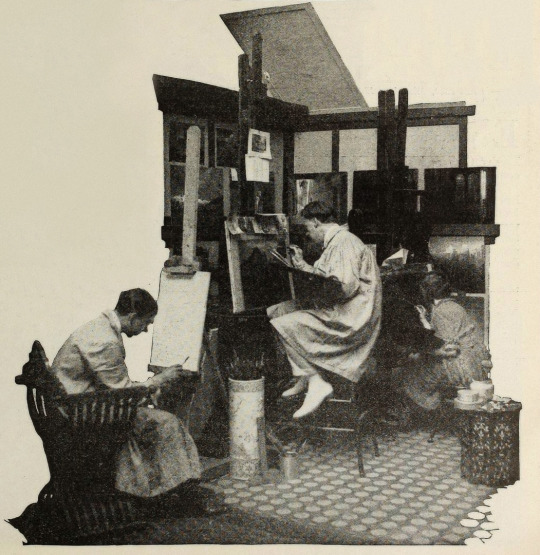


Points of Interest:
“The screen has been described as the last word in realism, but why confine it there? It can also be the last word in imaginative expression.”
Ferdinand P. Earle as quoted in Exhibitors Trade Review, 4 March 1922
The Rubaiyat of Omar Khayyam was a massive best seller. Ferdinand Pinney Earle was a classically trained artist who studied under William-Adolphe Bougueraeu and James McNeill Whistler in his youth. He also had years of experience creating art backgrounds, matte paintings, and art titles for films. Charles Wakefield Cadman was an accomplished composer of songs, operas, and operettas. Georges Benoit and Gordon Pollock were experienced photographic technicians. Edward S. Curtis was a widely renowned still photographer. Ramon Novarro was a name nobody knew yet—but they would soon enough.
When Earle chose The Rubaiyat as the source material for his directorial debut and collected such skilled collaborators, it seemed likely that the resulting film would be a landmark in the art of American cinema. Quite a few people who saw Earle’s Rubaiyat truly thought it would be:
William E. Wing writing for Camera, 9 September 1922, wrote:
“Mr. Earle…came from the world of brush and canvass, to spread his art upon the greater screen. He created a new Rubaiyat with such spiritual colors, that they swayed.”
…
“It has been my fortune to see some of the most wonderful sets that this Old Earth possesses, but I may truly say that none seized me more suddenly, or broke with greater, sudden inspiration upon the view and the brain, than some of Ferdinand Earle’s backgrounds, in his Rubaiyat.
“His vision and inspired art seem to promise something bigger and better for the future screen.”
As quoted in an ad in Film Year Book, 1923:
“Ferdinand Earle has set a new standard of production to live up to.”
Rex Ingram
“Fifty years ahead of the time.”
Marshall Neilan
The film was also listed among Fritz Lang’s Siegfried, Chaplin’s Gold Rush, Fairbanks’ Don Q, Lon Chaney’s Phantom of the Opera and The Unholy Three, and Erich Von Stroheim’s Merry Widow by the National Board of Review as an exceptional film of 1925.
So why don’t we all know about this film? (Spoiler: it’s not just because it’s lost!)
The short answer is that multiple dubious legal challenges arose that prevented Omar’s general release in the US. The long answer follows BELOW THE JUMP!
Earle began the project in earnest in 1919. Committing The Rubaiyat to film was an ambitious undertaking for a first-time director and Earle was striking out at a time when the American film industry was developing an inferiority complex about the level of artistry in their creative output. Earle was one of a number of artists in the film colony who were going independent of the emergent studio system for greater protections of their creative freedoms.
In their adaptation of The Rubaiyat of Omar Khayyam, Earle and Co. hoped to develop new and perfect existing techniques for incorporating live-action performers with paintings and expand the idea of what could be accomplished with photographic effects in filmmaking. The Rubaiyat was an inspired choice. It’s not a narrative, but a collection of poetry. This gave Earle the opportunity to intersperse fantastical, poetic sequences throughout a story set in the lifetime of Omar Khayyam, the credited writer of the poems. In addition to the fantastic, Earle’s team would recreate 12th century Persia for the screen.
Earle was convinced that if his methods were perfected, it wouldn’t matter when or where a scene was set, it would not just be possible but practical to put on film. For The Rubaiyat, the majority of shooting was done against black velvet and various matte photography and multiple exposure techniques were employed to bring a setting 800+ years in the past and 1000s of miles removed to life before a camera in a cottage in Los Angeles.
Note: If you’d like to learn a bit more about how these effects were executed at the time, see the first installment of How’d They Do That.
Unfortunately, the few surviving minutes don’t feature much of this special photography, but what does survive looks exquisite:

see all gifs here
Earle, knowing that traditional stills could not be taken while filming, brought in Edward S. Curtis. Curtis developed techniques in still photography to replicate the look of the photographic effects used for the film. So, even though the film hasn’t survived, we have some pretty great looking representations of some of the 1000s of missing feet of the film.
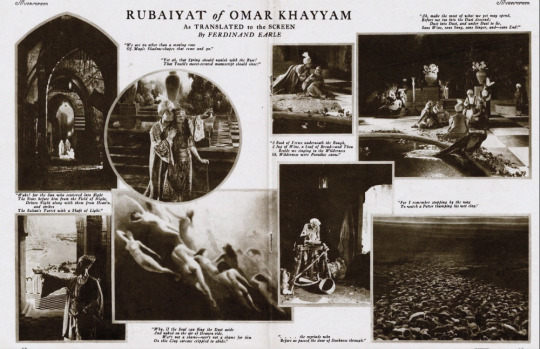
Nearly a year before Curtis joined the crew, Earle began collaboration with composer Charles Wakefield Cadman. In another bold creative move, Cadman and Earle worked closely before principal photography began so that the score could inform the construction and rhythm of the film and vice versa.
By the end of 1921 the film was complete. After roughly 9 months and the creation of over 500 paintings, The Rubaiyat was almost ready to meet its public. However, the investors in The Rubaiyat, Inc., the corporation formed by Earle to produce the film, objected to the ample reference to wine drinking (a comical objection if you’ve read the poems) and wanted the roles of the young lovers (played by as yet unknown Ramon Novarro and Kathleen Key) to be expanded. The dispute with Earle became so heated that the financiers absconded with the bulk of the film to New York. Earle filed suit against them in December to prevent them from screening their butchered and incomplete cut. Cadman supported Earle by withholding the use of his score for the film.
Later, Eastern Film Corp. brokered a settlement between the two parties, where Earle would get final cut of the film and Eastern would handle its release. Earle and Eastern agreed to change the title from The Rubaiyat of Omar Khayyam to simply Omar. Omar had its first official preview in New York City. It was tentatively announced that the film would have a wide release in the autumn.
However, before that autumn, director Norman Dawn launched a dubious patent-infringement suit against Earle and others. Dawn claimed that he owned the sole right to use multiple exposures, glass painting for single exposure, and other techniques that involved combining live action with paintings. All the cited techniques had been widespread in the film industry for a decade already and eventually and expectedly Dawn lost the suit. Despite Earle’s victory, the suit effectively put the kibosh on Omar’s release in the US.
Earle moved on to other projects that didn’t come to fruition, like a Theda Bara film and a frankly amazing sounding collaboration with Cadman to craft a silent-film opera of Faust. Omar did finally get a release, albeit only in Australia. Australian news outlets praised the film as highly as those few lucky attendees of the American preview screenings did. The narrative was described as not especially original, but that it was good enough in view of the film’s artistry and its imaginative “visual phenomena” and the precision of its technical achievement.
One reviewer for The Register, Adelaide, SA, wrote:
“It seems almost an impossibility to make a connected story out of the short verse of the Persian of old, yet the producer of this classic of the screen… has succeeded in providing an entertainment that would scarcely have been considered possible. From first to last the story grips with its very dramatic intensity.”
While Omar’s American release was still in limbo, “Ramon Samaniegos” made a huge impression in Rex Ingram’s Prisoner of Zenda (1922, extant) and Scaramouche (1923, extant) and took on a new name: Ramon Novarro. Excitement was mounting for Novarro’s next big role as the lead in the epic Ben-Hur (1925, extant) and the Omar project was re-vivified.

A new company, Astor Distribution Corp., was formed and purchased the distribution rights to Omar. Astor hired actor (note, not an editor) Milton Sills to re-cut the film to make Novarro and Key more prominent. The company also re-wrote the intertitles, reduced the films runtime by more than ten minutes, and renamed the film A Lover’s Oath. Earle had moved on by this point, vowing to never direct again. In fact, Earle was indirectly working with Novarro and Key again at the time, as an art director on Ben-Hur!
Despite Omar’s seemingly auspicious start in 1920, it was only released in the US on the states rights market as a cash-in on the success of one of its actors in a re-cut form five years later.
That said, A Lover’s Oath still received some good reviews from those who did manage to see it. Most of the negative criticism went to the story, intertitles, and Sills’ editing.
What kind of legacy could/should Omar have had? I’m obviously limited in my speculation by the fact that the film is lost, but there are a few key facts about the film’s production, release, and timing to consider.
The production budget was stated to be $174,735. That is equivalent to $3,246,994.83 in 2024 dollars. That is a lot of money, but since the production was years long and Omar was a period film set in a remote locale and features fantastical special effects sequences, it’s a modest budget. For contemporary perspective, Robin Hood (1922, extant) cost just under a million dollars to produce and Thief of Bagdad (1924, extant) cost over a million. For a film similarly steeped in spectacle to have nearly 1/10th of the budget is really very noteworthy. And, perhaps if the film had ever had a proper release in the US—in Earle’s intended form (that is to say, not the Sills cut)—Omar may have made as big of a splash as other epics.
It’s worth noting here however that there are a number of instances in contemporary trade and fan magazines where journalists off-handedly make this filmmaking experiment about undermining union workers. Essentially implying that that value of Earle’s method would be to continue production when unionized workers were striking. I’m sure that that would absolutely be a primary thought for studio heads, but it certainly wasn’t Earle’s motivation. Often when Earle talks about the method, he focuses on being able to film things that were previously impossible or impracticable to film. Driving down filming costs from Earle’s perspective was more about highlighting the artistry of his own specialty in lieu of other, more demanding and time-consuming approaches, like location shooting.
This divide between artists and studio decision makers is still at issue in the American film and television industry. Studio heads with billion dollar salaries constantly try to subvert unions of skilled professionals by pursuing (as yet) non-unionized labor. The technical developments of the past century have made Earle’s approach easier to implement. However, just because you don’t have to do quite as much math, or time an actor’s movements to a metronome, does not mean that filming a combination of painted/animated and live-action elements does not involve skilled labor.
VFX artists and animators are underappreciated and underpaid. In every new movie or TV show you watch there’s scads of VFX work done even in films/shows that have mundane, realistic settings. So, if you love a film or TV show, take the effort to appreciate the work of the humans who made it, even if their work was so good you didn’t notice it was done. And, if you’ve somehow read this far, and are so out of the loop about modern filmmaking, Disney’s “live-action” remakes are animated films, but they’ve just finagled ways to circumvent unions and low-key delegitimize the skilled labor of VFX artists and animators in the eyes of the viewing public. Don’t fall for it.
VFX workers in North America have a union under IATSE, but it’s still developing as a union and Marvel & Disney workers only voted to unionize in the autumn of 2023. The Animation Guild (TAG), also under the IATSE umbrella, has a longer history, but it’s been growing rapidly in the past year. A strike might be upcoming this year for TAG, so keep an eye out and remember to support striking workers and don’t cross picket lines, be they physical or digital!
Speaking of artistry over cost-cutting, I began this post with a mention that in the early 1920s, the American film industry was developing an inferiority complex in regard to its own artistry. This was in comparison to the European industries, Germany’s being the largest at the time. It’s frustrating to look back at this period and see acceptance of the opinion that American filmmakers weren’t bringing art to film. While yes, the emergent studio system was highly capitalistic and commercial, that does not mean the American industry was devoid of home-grown artists.
United Artists was formed in 1919 by Douglas Fairbanks, Charlie Chaplin, Mary Pickford, and D.W. Griffith precisely because studios were holding them back from investing in their art—within the same year that Earle began his Omar project. While salaries and unforgiving production schedules were also paramount concerns in the filmmakers going independent, a primary impetus was that production/distribution heads exhibited too much control over what the artists were trying to create.
Fairbanks was quickly expanding his repertoire in a more classical and fantastic direction. Cecil B. DeMille made his first in a long and very successful string of ancient epics. And the foreign-born children of the American film industry, Charlie Chaplin, Rex Ingram, and Nazimova, were poppin’ off! Chaplin was redefining comedic filmmaking. Ingram was redefining epics. Nazimova independently produced what is often regarded as America’s first art film, Salome (1923, extant), a film designed by Natacha Rambova, who was *gasp* American. Earle and his brother, William, had ambitious artistic visions of what could be done in the American industry and they also had to self-produce to get their work done.
Meanwhile, studio heads, instead of investing in the artists they already had contracts with, tried to poach talent from Europe with mixed success (in this period, see: Ernst Lubitsch, F.W. Murnau, Benjamin Christensen, Mauritz Stiller, Victor Sjöström, and so on). I’m in no way saying it was the wrong call to sign these artists, but all of these filmmakers, even if they found success in America, had stories of being hired to inject the style and artistry that they developed in Europe into American cinema, and then had their plans shot down or cut down to a shadow of their creative vision. Even Stiller, who tragically died before he had the opportunity to establish himself in the US, faced this on his first American film, The Temptress (1926, extant), on which he was replaced. Essentially, the studio heads’ actions were all hot air and spite for the filmmakers who’d gone independent.

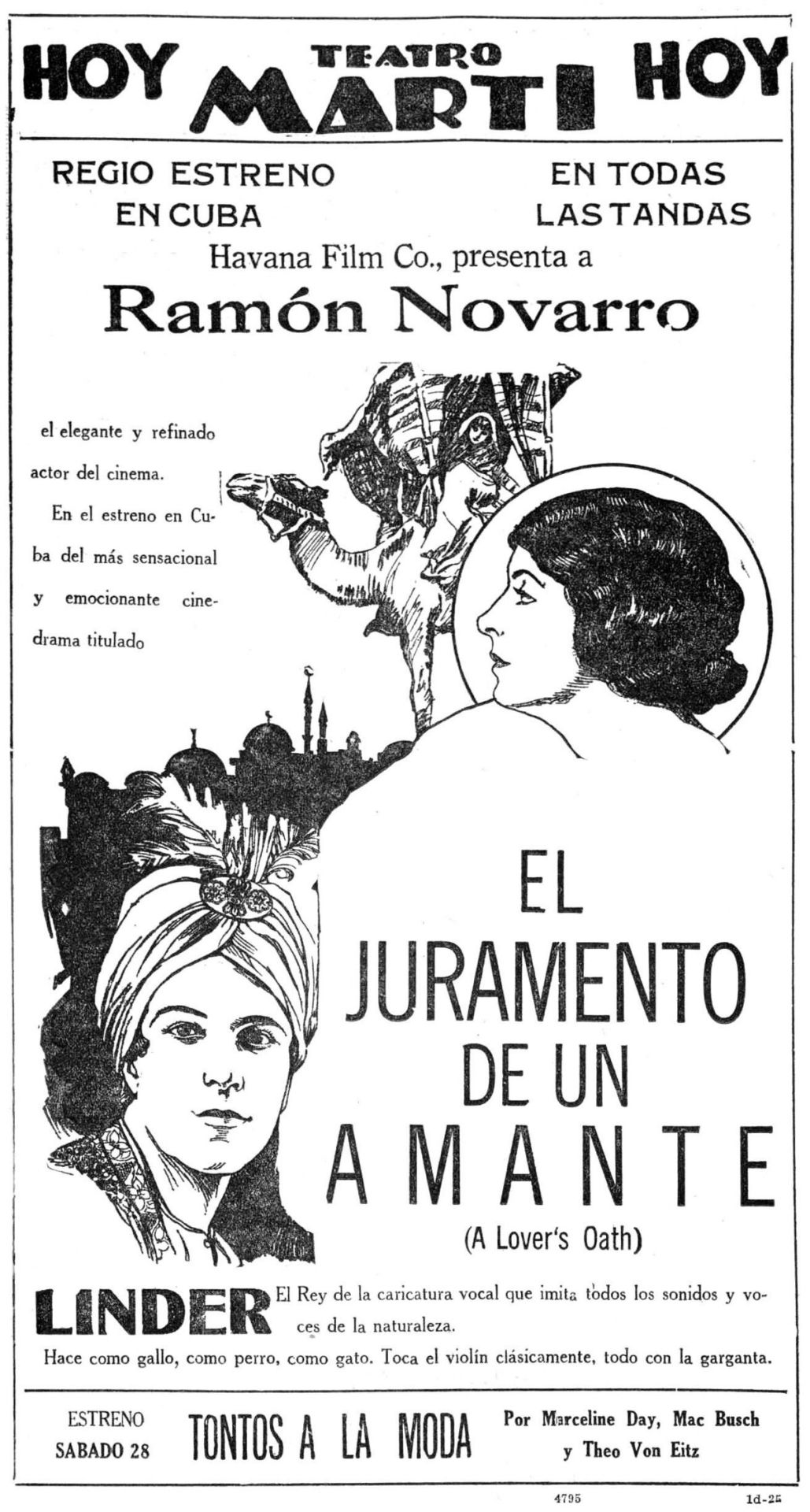
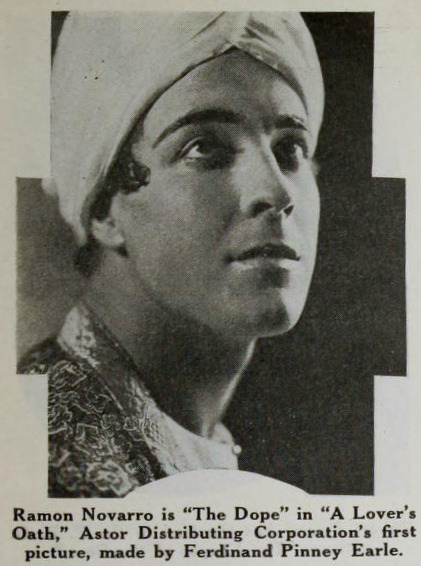
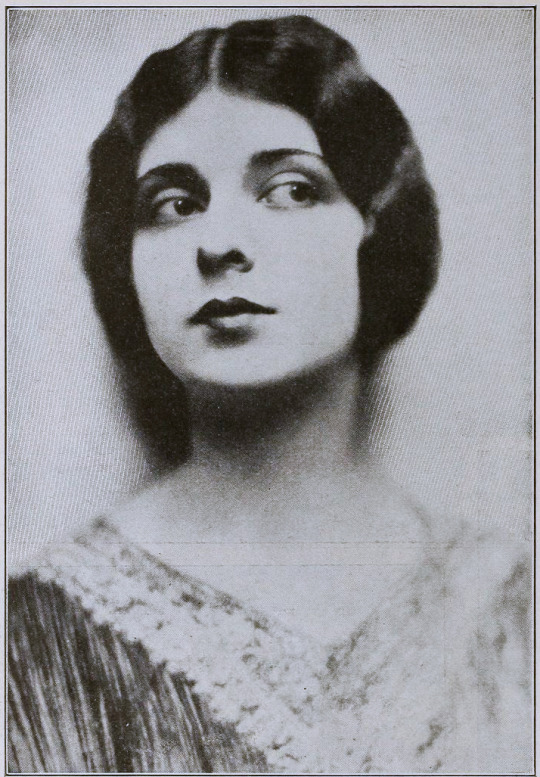
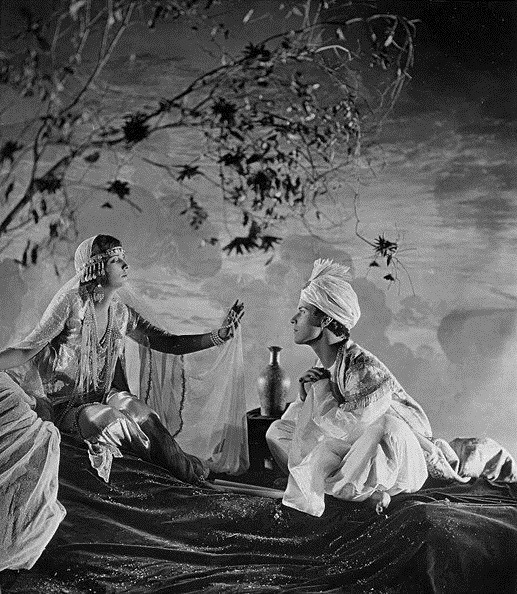
Finally I would like to highlight Ferdinand Earle’s statement to the industry, which he penned for from Camera in 14 January 1922, when his financial backers kidnapped his film to re-edit it on their terms:
MAGNA CHARTA
Until screen authors and producers obtain a charter specifying and guaranteeing their privileges and rights, the great slaughter of unprotected motion picture dramas will go merrily on.
Some of us who are half artists and half fighters and who are ready to expend ninety per cent of our energy in order to win the freedom to devote the remaining ten per cent to creative work on the screen, manage to bring to birth a piteous, half-starved art progeny.
The creative artist today labors without the stimulus of a public eager for his product, labors without the artistic momentum that fires the artist’s imagination and spurs his efforts as in any great art era.
Nowadays the taint of commercialism infects the seven arts, and the art pioneer meets with constant petty worries and handicaps.
Only once in a blue moon, in this matter-of-fact, dollar-wise age can the believer in better pictures hope to participate in a truely [sic] artistic treat.
In the seven years I have devoted to the screen, I have witnessed many splendid photodramas ruined by intruding upstarts and stubborn imbeciles. And I determined not to launch the production of my Opus No. 1 until I had adequately protected myself against all the usual evils of the way, especially as I was to make an entirely new type of picture.
In order that my film verison [sic] of the Rubaiyat of Omar Khayyam might be produced under ideal conditions and safeguarded from intolerable interferences and outside worries, I entered into a contract with the Rubaiyat, Inc., that made me not only president of the corporation and on the board of directors, but which set forth that I was to be author, production manager, director, cutter and film editor as well as art director, and that no charge could be made against the production without my written consent, and that my word was to be final on all matters of production. The late George Loane Tucker helped my attorney word the contract, which read like a splendid document.
Alas, I am now told that only by keeping title to a production until it is declared by yourself to be completed is it safe for a scenario writer, an actor or a director, who is supposedly making his own productions, to contract with a corporation; otherwise he is merely the servant of that corporation, subject at any moment to discharge, with the dubious redress of a suit for damages that can with difficulty be estimated and proven.
Can there be any hope of better pictures as long as contracts and copyrights are no protection against financial brigands and bullies?
We have scarcely emerged from barbarism, for contracts, solemnly drawn up between human beings, in which the purposes are set forth in the King’s plainest English, serve only as hurdles over which justice-mocking financiers and their nimble attorneys travel with impunity, riding rough shod over the author or artist who cannot support a legal army to defend his rights. The phrase is passed about that no contract is invioliable [sic]—and yet we think we have reached a state of civilization!
The suit begun by my attorneys in the federal courts to prevent the present hashed and incomplete version of my story from being released and exhibited, may be of interest to screen writers. For the whole struggle revolves not in the slightest degree around the sanctity of the contract, but centers around the federal copyright of my story which I never transferred in writing otherwise, and which is being brazenly ignored.
Imagine my production without pictorial titles: and imagine “The Rubaiyat” with a spoken title as follows, “That bird is getting to talk too much!”—beside some of the immortal quatrains of Fitzgerald!
One weapon, fortunately, remains for the militant art creator, when all is gone save his dignity and his sense of humor; and that is the rapier blade of ridicule, that can send lumbering to his retreat the most brutal and elephant-hided lord of finance.
How edifying—the tableau of the man of millions playing legal pranks upon men such as Charles Wakefield Cadman, Edward S. Curtis and myself and others who were associated in the bloody venture of picturizing the Rubaiyat! It has been gratifying to find the press of the whole country ready to champion the artist’s cause.
When the artist forges his plowshare into a sword, so to speak, he does not always put up a mean fight.
What publisher would dare to rewrite a sonnet of John Keats or alter one chord of a Chopin ballade?
Creative art of a high order will become possible on the screen only when the rights of established, independent screen producers, such as Rex Ingram and Maurice Tourneur, are no longer interferred with and their work no longer mutilated or changed or added to by vandal hands. And art dramas, conceived and executed by masters of screen craft, cannot be turned out like sausages made by factory hands. A flavor of individuality and distinction of style cannot be preserved in machine-made melodramas—a drama that is passed from hand to hand and concocted by patchworkers and tinkerers.
A thousand times no! For it will always be cousin to the sausage, and be like all other—sausages.
The scenes of a master’s drama may have a subtle pictorial continuity and a power of suggestion quite like a melody that is lost when just one note is changed. And the public is the only test of what is eternally true or false. What right have two or three people to deprive millions of art lovers of enjoying an artist’s creation as it emerged from his workshop?
“The Rubaiyat” was my first picture and produced in spite of continual and infernal interferences. It has taught me several sad lessons, which I have endeavored in the above paragraphs to pass on to some of my fellow sufferers. It is the hope that I am fighting, to a certain extent, their battle that has given me the courage to continue, and that has prompted me to write this article. May such hubbubs eventually teach or inforce a decent regard for the rights of authors and directors and tend to make the existence of screen artisans more secure and soothing to the nerves.
FERDINAND EARLE.
---
☕Appreciate my work? Buy me a coffee! ☕
Transcribed Sources & Annotations over on the WMM Blog!
See the Timeline for Ferdinand P. Earle's Rubaiyat Adaptation
#1920s#1923#1925#omar khayyam#ferdinand pinney earle#ramon novarro#independent film#american film#silent cinema#silent era#silent film#classic cinema#classic movies#classic film#film history#history#Charles Wakefield Cadman#cinematography#The Rubaiyat#cinema#film#lost film
49 notes
·
View notes
Text
Can John Paul II’s sainthood be cancelled?
The editors of the National Catholic Reporter have asked that the cult of John Paul II be suppressed for his role in the appointment of Theodore McCarrick to be Archbishop of Washington, DC. This comes in the light of the “McCarrick report” last week.
Some people think that the Church’s canonizations are infallible acts, declaring infallibly that the canonized is a saint in heaven. In which case, what the NCR editors are asking would be impossible.
But that’s not actually the Church’s teaching. It is possible to remove a canonized saint’s public cult. However, the NCR editors haven’t come close to making that case. (Deep dive below the break.)
Infallibility only applies to matters that are part of the deposit of faith or directly implied by the deposit of faith. Cardinal Avery Dulles, in his book Magisterium (p. 78), points out that whether or not such-and-such a person who lived after the death of the last apostle is in heaven--that’s not in either category. He then cites the conclusion of a Lutheran-Roman Catholic dialogue (in which he had participated):
32. The theological manuals of recent generations rather commonly hold that solemn canonizations of saints, as contained in papal decretal letters, are infallible. The tradition in favor of infallibility in the matter has been traced back at least to the time of Thomas Aquinas, but there are genuine difficulties in seeing how canonizations fall within the object of papal infallibility as taught by Vatican I or Vatican II. Certainly, the virtues of particular persons of postbiblical times, and their present situation before God, can scarcely be reckoned as part of the apostolic deposit of faith. If one looks on revelation as having become complete in Christ, holiness may reasonably be seen as a concrete way of living, in a given culture, the saving truth revealed in Christ. The Church has the power to recognize authentic Christian holiness, yet canonization would not seem of its nature to convey infallible certitude that the holiness in question was actually present in the life of this or that historical person.
Here are the relevant parts of Vatican I and II on the “object of infallibility”: Vatican I’s Dei Filius ch. 4, par.13
“For, the doctrine of faith which God revealed... has been entrusted as a divine deposit to the Spouse of Christ, to be faithfully guarded and infallibly interpreted”
and Pastor Aeternus, ch. 4, par.6
“For the Holy Spirit was not promised to the successors of Peter that by His revelation they might make known new doctrine, but that by His assistance they might inviolably keep and faithfully expound the Revelation, the Deposit of Faith, delivered through the Apostles”;
and most importantly Vatican II’s Lumen Gentium #25:
“This infallibility with which the Divine Redeemer willed His Church to be endowed in defining doctrine of faith and morals, extends as far as the deposit of Revelation extends, which must be religiously guarded and faithfully expounded.”
In an excellent article in Nova et Vetera 17:3, William Diem, after surveying the theological tradition, concludes that canonizations hold a middle position between merely disciplinary/liturgical decrees and infallible teaching. The Church infallibly declares that, based on what we know about a person’s moral life and about the miracles attributed to that person’s intercession, the canonized person is a saint deserving of a public cult. The infallibility extends to what’s publicly known--assuming that there’s nothing we don’t know that would change the answer, what we do know establishes that this person’s life is worthy of imitation and is an example of what has been handed down about holiness from the deposit of faith. For instance, you can’t point to the penitential practices of a canonized saint and say, “this guy is not holy because of his penitential practices.” Saint Bonaventure, in defending the Franciscan view of poverty, pointed out that saints in the past had been canonized while publicly taking vows of poverty, and so taking vows of poverty was infallibly declared by the Church to be compatible with holiness.
However, if there’s something not publicly known about the person (some secret sin) or if the witnesses to either the miracles or the moral life of the canonized are in some way mistaken, then the canonized person might not actually be in heaven. If the canonized is in heaven, then asking for his or her intercession makes abundant sense. If the canonized not in heaven, then our prayers for intercession are misdirected, and a public cult is not in order.
It’s that last part which (if we’re charitably assuming the NCR editors are theologically on top of the status questionis) gives their argument some purchase. So, is there anything that we learned in the McCarrick Report that 1) was not publicly known about Pope John Paul II at the time of his canonization and that 2) disqualifies him from being in heaven? I don’t think so, for more or less the reasons that George Weigel outlines here: https://www.firstthings.com/web-exclusives/2020/11/theodore-mccarrick-not-john-paul-ii-is-the-story-of-the-mccarrick-report
The report on pp. 149-192, goes into detail about what was being said about then Archbishop McCarrick before his appointment to DC. Basically, nobody had anything more than rumors about any sexual impropriety. Nothing was on the record. Cardinal John O’Connor of New York desperately didn’t want McCarrick to succeed him as Archbishop, and so his passing along the rumors to the Pope was probably discounted for the reason that he wasn’t objective about McCarrick for other reasons. The reports says (p. 179 fn 593) that it was important to the pope that the Archbishop of Washington be politically savvy, which McCarrick was, and it seems that was his major qualification for the post. Major figures in the Church investigated McCarrick’s moral life and didn’t find anything to disqualify him, and told the Pope that. The report says (p. 173 fn 580) that the pope believed that people often used rumors of sexual misconduct to discredit figures in the Church--indeed the Communists in Poland tried to discredit him by planting evidence of an affair in his apartment. In the US, Cardinal Joseph Bernadin of Chicago was falsely accused of sexual abuse--the putative victim later recanted.
Since John Paul II didn’t have anything more than rumors to discredit McCarrick, rumors that his own experience told him not to trust, he eventually decided to appoint him. Since the rumors about McCarrick had already been investigated, it was decided that they didn’t need to be investigated again. That last, procedural decision not to repeat the work already done by others, is what the NCR editors think means that John Paul II isn’t in heaven. As if not doing redundant paperwork is a mortal sin.
To be fair to their editorial, what they are insinuating is that the procedural decision reveals something that was not known at the time of the canonization: that John Paul II didn’t care about the sexual abuse of minors: “John Paul, in many ways an admirable man, was willfully blind to the abuse of children and young people.” In which case, not de-canonizing him would be an infallible declaration that the Church doesn’t care about the abuse of minors! But that’s pretty thin, for at least three reasons: 1) The report explicitly undermines their uncharitable interpretation by providing context; 2) the pope did take action against clerical abuse when he grasped the scope of the problem; and 3) John Paul II’s handling of the sex abuse crisis was something already known and discussed before his canonization.
If Thomas Aquinas is right that it’s an act of piety to trust the Church���s canonizations (pie credendum est), the NCR editorial is, simply put, impious.
#infallibility#canonization#mccarrick report#john paul II#National Catholic Reporter#st. thomas aquinas
31 notes
·
View notes